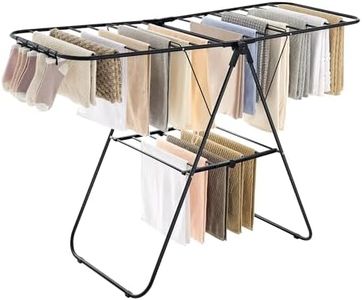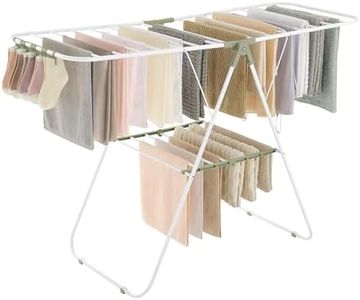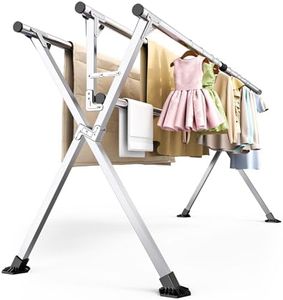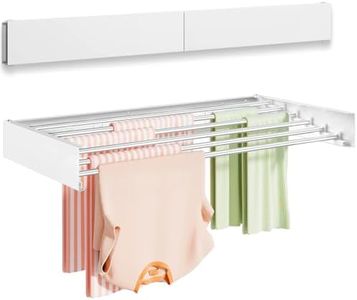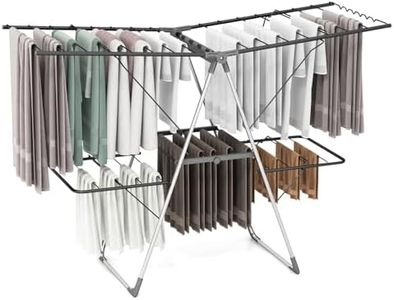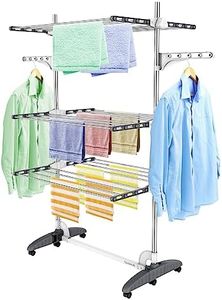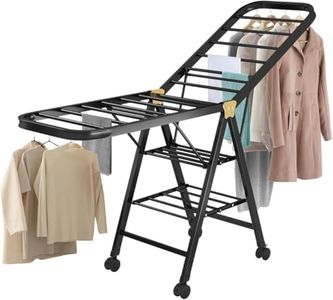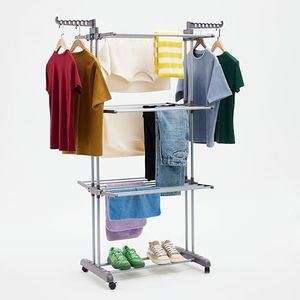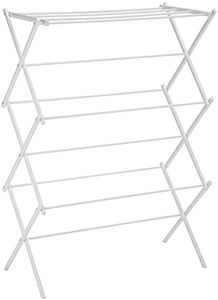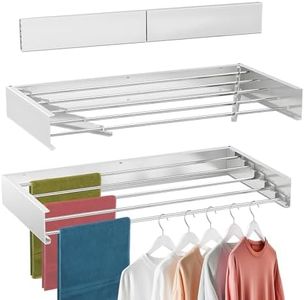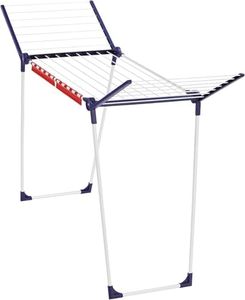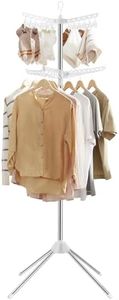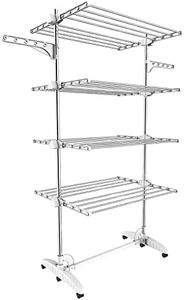We Use CookiesWe use cookies to enhance the security, performance,
functionality and for analytical and promotional activities. By continuing to browse this site you
are agreeing to our privacy policy
10 Best Laundry Drying Rack
From leading brands and best sellers available on the web.Buying Guide for the Best Laundry Drying Rack
Choosing the right laundry drying rack can make a big difference in your home routine. A good rack helps you dry your clothes efficiently without needing a dryer, saves energy, and prolongs the lifespan of your garments by avoiding the harshness of machine drying. When selecting a drying rack, think about your available space, the quantity and types of items you regularly wash, and how often you need to dry laundry indoors or outdoors. Knowing the key features will help you find a rack that fits your needs and lifestyle.Size and CapacityThe size and capacity of a drying rack refer to how much clothing it can hold at once and its physical dimensions. This is important because it affects whether the rack will fit in your home and if it can handle your usual laundry load. Smaller racks are great for tight spaces or one-person households, while medium ones work well for couples or small families, and large or expandable racks suit bigger families or those who often wash bulky items like bedding. Choose based on how much laundry you do at once and where you plan to place the rack—measure your space to make sure it fits comfortably.
MaterialLaundry drying racks are typically made from materials like plastic, stainless steel, aluminum, or wood. The material affects durability, weight, and whether the rack can be used outdoors. Stainless steel and aluminum racks are sturdy, rust-resistant, and suitable for both indoor and outdoor use, while wooden racks are gentle on clothes and look nice but are usually best kept indoors to avoid damage from moisture. Choose a material that matches your needs: durability and outdoor use call for metal, while indoor-only, aesthetic preference, or lighter loads might point to wood or plastic.
Foldability and StorageThis refers to how easily you can fold up and store the drying rack when it's not in use. Some racks are fully collapsible, making them easy to tuck away under a bed or behind a door, while others are more rigid or fixed in shape. If you have limited space or only need a drying rack occasionally, look for models that fold flat and are lightweight. For permanent setups with plenty of space, a larger, sturdier rack that stays assembled may work better.
Design and ConfigurationRacks come in various designs—tiered, expandable, wall-mounted, or winged. The design determines how much drying space is available and how items are hung. Horizontal racks with several bars suit flat drying, while vertical or tiered racks maximize space upwards. Winged racks offer extra hanging space for delicate or long items, and wall-mounted racks are good for small areas where floor space is precious. Consider the types of items you dry most—flat racks for sweaters, bars for shirts—and the available space to decide which design fits your laundry habits.
Weight CapacityWeight capacity indicates how much weight the rack can handle without collapsing or sagging. This matters if you regularly dry heavy items like towels or blankets. Light-duty racks are fine for everyday shirts and undergarments, but for heavier loads, you need a sturdier, higher-capacity rack. Match the rack's strength to your laundry types: if you wash sheets, jeans, or towels often, prioritize a rack with high weight capacity.
Ease of AssemblySome drying racks require assembly, while others come pre-assembled or have simple folding mechanisms. Ease of assembly is important if you want to start using your rack immediately or if you prefer not to handle complicated instructions and lots of small parts. For quick, hassle-free setup, go for racks that advertise tool-free or minimal assembly. If you're handy and want a more permanent solution, assembly may not be a concern.
